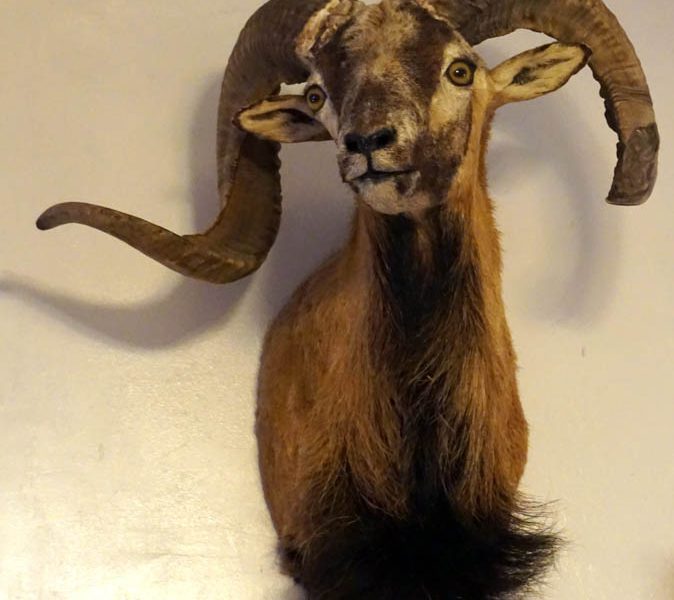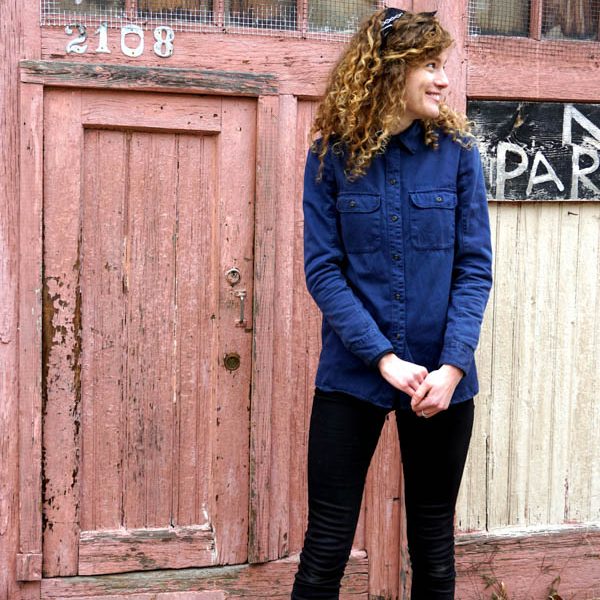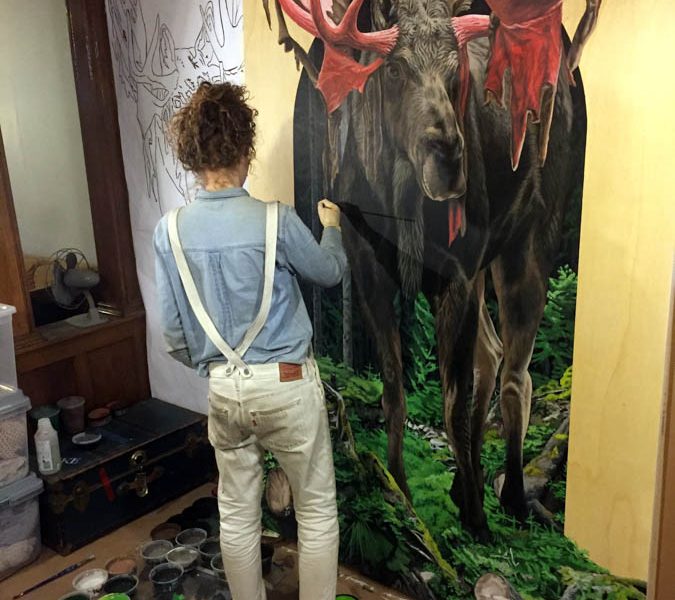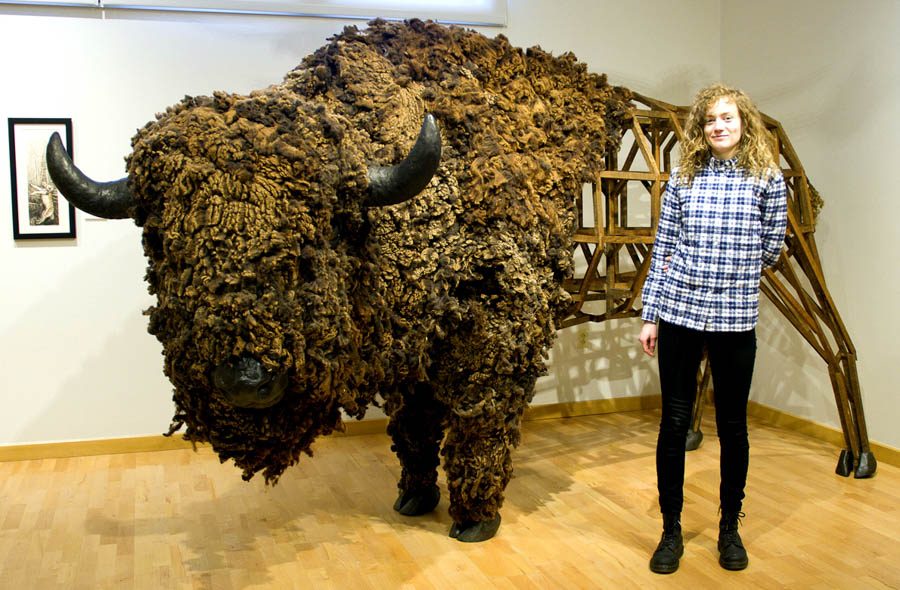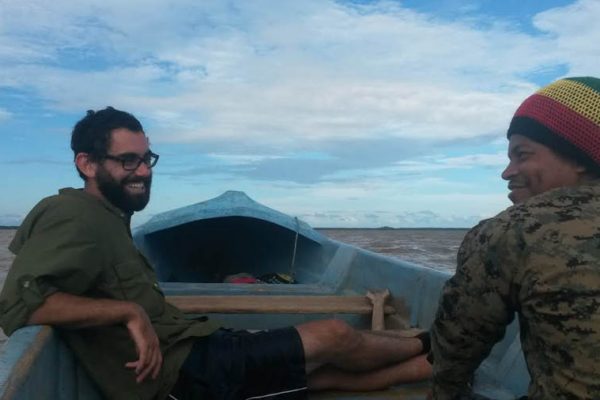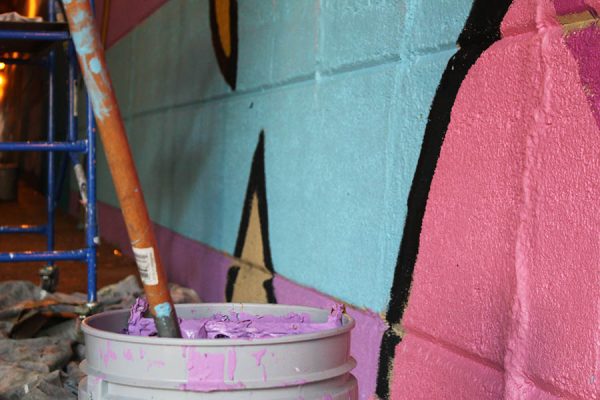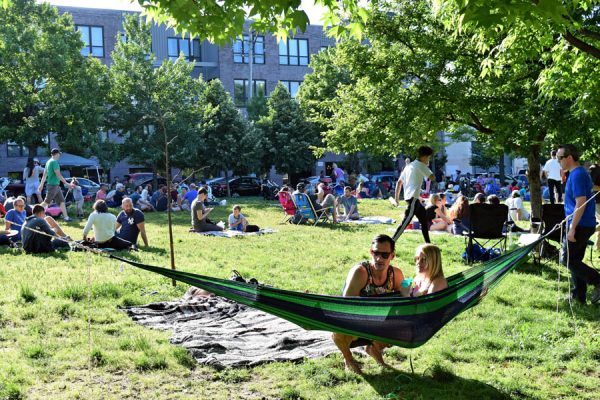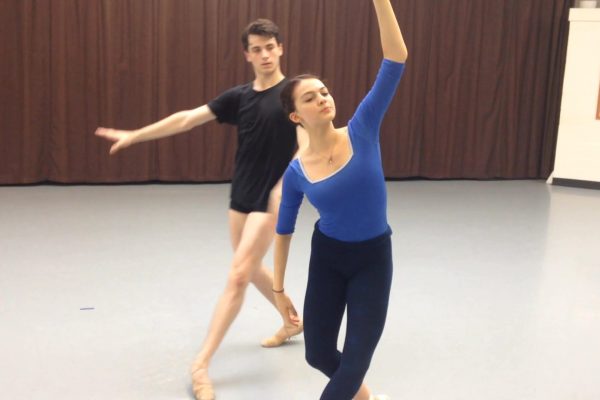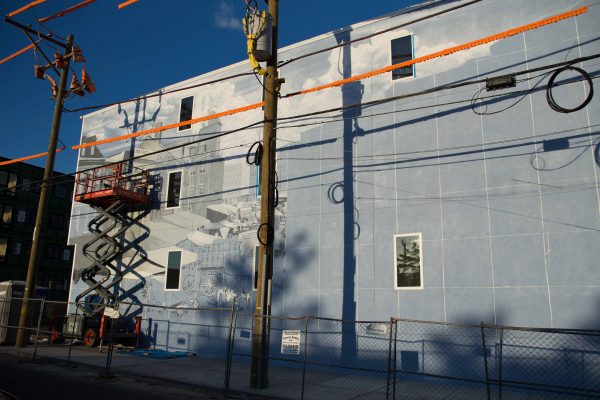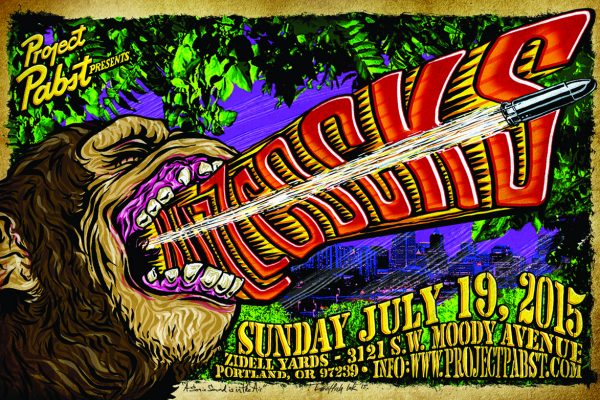ARTIST PROFILE: Emily R. White, Painter, Sculptor, Watercolorist, Muralist, and More
The ceilings soar above old lamps and tables, a crackled mirror, a 1950s fan. Work gloves, a tortoiseshell and a jumble of glass doorknobs line the mantelpiece. Carved wood columns frame the living room, where pale winter light pours through black-lace window dressings that came with the 100-year-old house. A magnificent wild ram, stuffed and preserved, gazes into the distance as though recalling the generations of people who lived here before, and are now past.
In the front room, Emily White, artist and Fishtown resident, has begun to sketch the bones of her next wall-size painting. It is pinned to the wall beneath the stairs. The vast space accommodates the scaffolding with ease. Emily’s studio will be upstairs, once the house is deemed habitable by Philadelphia building inspectors. We settle down in the cold to chat, accompanied by her dog, Mason. A plumber interrupts periodically to provide updates on his untangling of a puzzling pipe system.
Emily moved to Philadelphia in 2011 after completing a Bachelor’s of Fine Art degree at Massachusetts College of Art and Design. “The public art here!” she says. “One of my dreams was to work on Philly murals.” She is now an assistant artist in the Philadelphia Mural Arts Program. But Emily’s talents blossom from paint to sculpture to . . . a universe of possibilities. As her trajectory thus far shows, her artistic spirit will not be confined.
“I started in illustration,” Emily said. “You had 1 week to finish assignments, which forced you to work small.”
Emily likes to work big. “And the instruction would be, for example, ‘A catfish bit a dog. Illustrate it!’,”she said. “The message was, you can do whatever you want… inside this tiny box.”
Emily doesn’t need an applied framework. Example: Her first full-blown sculpture sprang from 3 months volunteering at an orphanage in Kenya. “It was my quarter-life crisis,” she said. That urge to help met with disappointment when volunteers discovered that the $1000 they’d each paid to participate was clearly not going to the orphans, who were sleeping three to a bed. Emily channeled the experience into a fabric sculpture of a 6-foot woman crouching into an almost fetal posture, arms wound around her torso with one hand plunging deep into her own back. This piece is now in a private collection.
The self-searching in “Wrist Deep” made her open to hearing the language of rusty metal and worn timber during a visit to abandoned mines. Which led to a sensibility about pre–World War I aircraft that found expression in a sculpture of aluminum and plywood passenger pigeons, which was temporarily installed at Philadelphia International Airport. Passenger pigeons became extinct in 1914, when modern aviation was burgeoning.
Her path then led to being chosen along with nine other MassArt alumni to investigate the structural details of surviving wooden churches across Poland and the Czech Republic on a professor-led trip. The end-product was the partial recreation of the 18th-century Gwozdziec Synagogue in the Museum of the History of Polish Jews, which is located in a former Nazi Warsaw ghetto. It is a permanent exhibit comprising a handmade timber-frame structure — pegs and joinery, no hardware — as well as rabbit-skin glue, hand-ground pigments, and other exacting period materials. (The group partially based their work on churches because early synagogues had been burned down.) Back in Philadelphia, this rare experience sparked the massive, timber-frame animals that now expand Emily’s repertoire.
Emily elaborated: “My bison, which is also at the airport, was seen by some Philadelphia Flower Show people, and so I offered to do a bear for this year’s celebration of the 100th anniversary of the National Park Service. They paid for the materials.” The fascination with animals is not new. “Something about the appearance of an animal, the way it moves… ” she said. Inspiration comes from everywhere. Emily marvels, “Also, you know, there are so many weird, fantastical Philly things.”
Some of her pieces from the just-ended show at the Philadelphia Art Alliance are on their way to the Adirondacks for a show at the View Arts Center, Old Forge, New York. In April, she will fill a room at the Fleisher Memorial, as an awardee of the Fleisher Wind Challenge juried competition.
A door slams and Mason lifts his head as the plumber returns to report a solution for the water pumping into the garage. That’s where her wood and metal shop will be. As the frame of this house begins to fill with her life, Emily envisions her next animal monument. •
